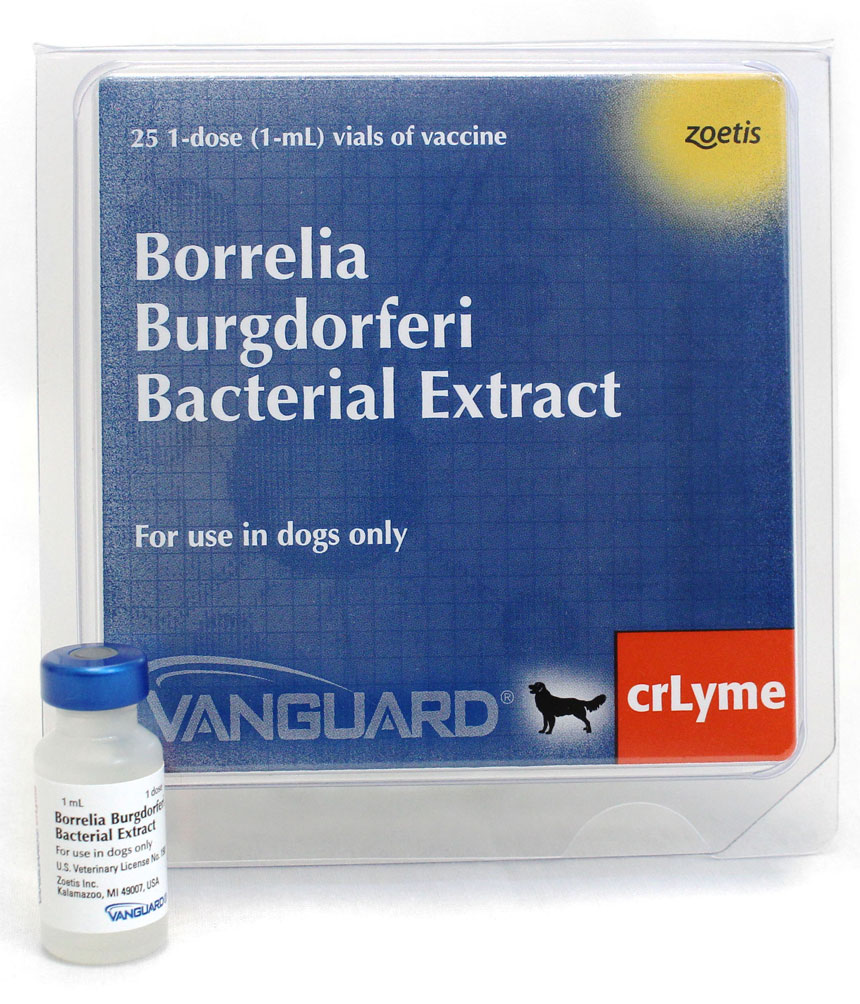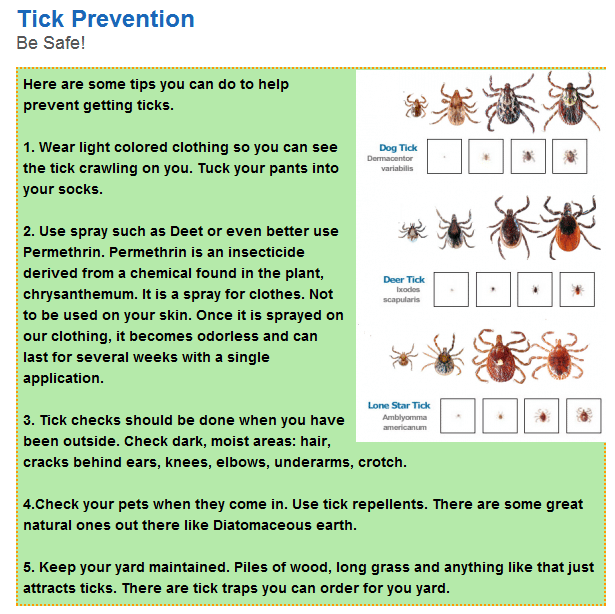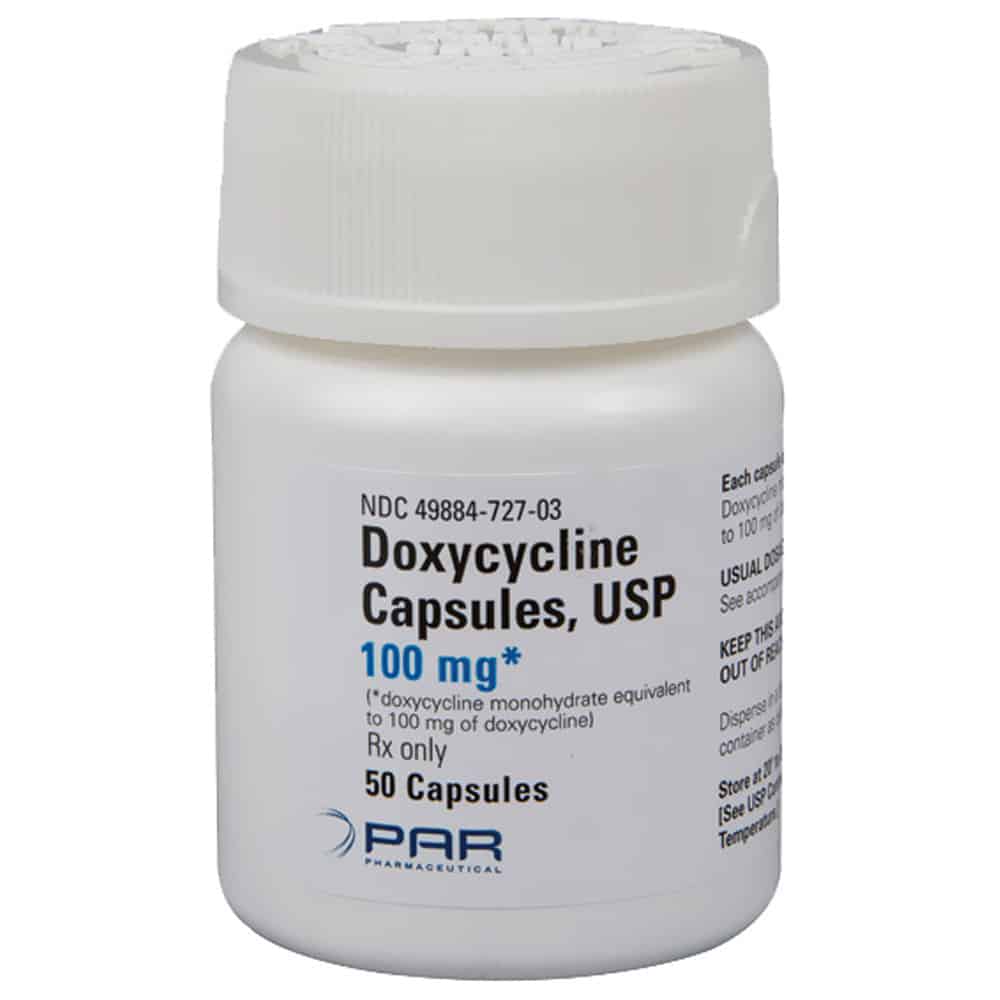Possible Complications To Watch For With Lyme Disease
Talk to your veterinarian if you have any questions or concerns about your dogs condition.
- Some dogs who take antibiotics can develop loss of appetite, vomiting and diarrhea.
- Once infected, a dog will always have the bacteria that cause Lyme disease in his or her body. Therefore, relapses are possible, and owners should be on the lookout for unexplained fever, swollen lymph nodes, and/or lameness.
- A small percentage of dogs develop kidney failure as a result of Lyme disease. Clinical signs include vomiting, weight loss, poor appetite, lethargy, increased thirst and urination, and abnormal accumulations of fluid within the body.
How Can You Tell If Your Dog Has Lyme Disease
Hereâs the thing, even if a dog has been infected, the dog may not show any symptoms at all.
If a dog does show symptoms, usually the symptoms show up two to five months after the tick bite.
Unlike in people where the classic symptom is a red, âbullâs eyeâ rash, dogs donât develop such a rash.
Instead, one classic canine Lyme disease symptom is the sudden onset of lameness, and quite often, thatâs the only symptom. You will notice that one or more of your dogâs joints has become swollen and painful to the touch. The dog will limp, and may walk hunched over. The lameness may last for only a few days, although in some cases it may last longer or recur for months.
Other symptoms that an infected dog may develop include:
- Lethargy and weakness
- Loss of appetite
In more serious cases, an infected dog may develop severe kidney disease leading to kidney failure. In rare cases, the heart or the nervous system may also be affected. Understandably, these problems are more difficult to treat and can be fatal.
Use Flea And Tick Preventives
Did you know that most flea and tick medications donât prevent ticks from jumping onto or even biting your dog? They kill ticks once they bite. In most cases, ticks must be attached for 24-48 hours to transmit Lyme disease, so preventative medications help thwart the diseaseâs spread. Consult with your veterinarian about the most appropriate product for your dog.
Recommended Reading: Lyme And Pans Treatment Center
What The Research Says About Lyme Disease In Dogs
Dr. Thomas Rau, a Swiss researcher, traveled to locations where Lyme disease was prevalent. He conducted research among groups of farmers who were most likely exposed to Lyme disease. And he discovered something of interest. Despite the fact that 80 percent of the farmers had Lyme disease, just 2 percent of those who had the condition had any symptoms. That indicates that the great majority of farmers who were infected with Lyme disease were able to fight it off without the assistance of a doctor.
- And this is when things start to get interesting.
- Rau noticed that all of the persons who had full-blown Lyme disease symptoms also had additional viruses in their system.
- This is consistent with recent studies that looked examined instances of Lyme disease that occurred in the 1990s.
What To Do If Your Dog Tests Positive For Lyme Disease

If your dog enjoys roaming freely through the beautiful Virginia outdoors, it is likely that it may come into contact with a tick sooner or later. Furthermore, because many ticks in this region are also carriers of Lyme disease, your pets outside activities may put him or her at danger of contracting a serious infection. Lyme disease is caused by germs found in the saliva of the tick. When a tick attaches itself to your dog, it does more than just sucking blood it also exchanges spit with the victim.
When this occurs, your dogs immune system may respond by releasing antibodies into the environment.
If your dog tests positive for the Lyme bacterium during this screening test, it is likely that your dog has the bacteria.
It only alerts the doctor that the dog has already begun to develop an immune response, even if you are not aware of any clinical signs or symptoms at this point in the process.
Recommended Reading: How Do We Get Lyme Disease
How Lyme Infection Works
The primary organism that causes Lyme, Borrelia burgdorferi, is evolving rapidly into many different species and strains trying to evade attack by antibiotics.
On top of that, several organisms can work synergistically to create the disease. Most of these organisms are difficult to detect with blood tests.
These latent forms often dont show up on tests, even though they still create havoc in the body.
Symptoms can come and go as well, moving about the body.
Lyme disease can take several different courses of disease once it enters the body of a human or animal.
Lyme Disease In Dogs: What Concerned Pet Parents Need To Know
Lyme disease in dogs: Four very scary words for a pet parent. When a pup is bitten by an infected tick and contracts Lyme disease, they can get very sick, becoming feverish, tired and experiencing pain from arthritis, which can be a result of this disease attacking collagen-rich body tissue. The very good news is that with the right tools and knowledge, Lyme disease in dogs is treatable and completely preventable.
From the symptoms of Lyme disease in dogs to watch out for to possible treatments, heres what pet parents need to know.
Recommended Reading: Common Signs Of Lyme Disease
What Are The Symptoms Of Lyme Disease
Dogs can display several forms of Lyme disease, but the most common symptoms are lameness, swollen lymph nodes, joint swelling, fatigue, and loss of appetite. In addition, serious kidney complications have been associated with Lyme disease in dogs.
Clinical signs of Lyme disease in horses include shifting-leg lameness, generalized stiffness, hypersensitivity to touch, weight loss, and poor performance. Sometimes, the bacteria can infect the central nervous system, leading to neurologic symptoms.
Preventing Lyme Disease In Dogs
If possible, keep your dog away from tick-infested environments where Lyme disease is common.
Check your dogs coat and skin daily to make sure you find any ticks hiding on your pet, and remove ticks by hand.
The most effective way to prevent Lyme disease and protect pets from other tick-borne diseases is to use flea and tick prevention.
Your veterinarian can prescribe a variety of prescription flea and tick options, including collars, topical solutions, and tablets and chews that kill and repel ticks. These products should be used under a veterinarian’s supervision and according to the label’s directions.
If you live in an area where ticks are abundant, Lyme vaccines are available. However, not all dogs are a good candidate for the vaccine. Talk to your veterinarian to see if the Lyme vaccination is right for your dog.
References:
1. Lyme Disease. Companion Animal Parasite Council. https://capcvet.org/guidelines/lyme-disease/.
2. Littman MP, Gerber B, Goldstein RE, Anna M, Michael L, George RL. ACVIM consensus update on Lyme borreliosis in dogs and cats. J Vet Intern Med. 2018 :887-903. doi:10.1111/jvim.15085
Recommended Reading: Does Medicare Cover Lyme Disease Treatment
The Homeopathic View Of Lyme Disease
A well-known homeopath, Ron Whitmont MD, published an article on homeopathy and Lyme disease. It shows the great potential of dealing with this problem without resorting to drugs .
He first states that Lyme disease in humans has three stages. Lets look at the difference in the way Lyme progresses in humans compared to dogs
Stage 1 Early localized disease first 1-2 weeks. The famous bulls eye skin rash appears during this time.
Stage 2 Early disseminated disease from 3 weeks to several months. Polyarthritis, fibromyalgia-like symptoms, and less commonly kidney, neurologic and other deeper symptoms
Stage 3 Late chronic disease from ten months to several years. Humans develop more severe arthritis and neurologic, cardiac, and kidney diseases. This are also usually progressive.
Recommended Reading: What Antibiotics Can Treat Mrsa
What The Research Said
In the first study in 2017, the researchers evaluated 34 essential oils against Lyme disease organisms. They used a culture that mimics the persistent phase of the organism.
We were able to identify 23 essential oils at 1% concentration that are more active than the control persister drug Daptomycin three of which, oregano, clove bud, and cinnamon bark, highlighted themselves as having a remarkable activity even at a very low concentration of 0.125%.
Among them, oregano and cinnamon bark essential oils demonstrated the best activity as shown by complete eradication of stationary phase B. burgdorferi even at 0.05% concentration.
So, translating they found 23 different essential oils that worked against the persistent form of Lyme disease.
And they worked better than one of the strongest antibiotics they have even at very low concentrations.
The most effective oils were:
- Cinnamon bark oil
The top three hits, oregano, cinnamon bark, and clove bud completely eradicated all viable cells without any regrowth in subculture in fresh medium.
So the oils wiped out the Lyme disease permanently.
In the second study, they screened 35 more essential oils. And they found 10 more with strong activity against the persistent phase of Lyme disease.
The top 10 essential oils that worked the best against Lyme disease were:
- Lemon eucalyptus
You May Like: Early Symptoms Of Lyme Disease In Adults
What Is The Cost Of Lyme Disease
With an estimated 240,000 to 440,000 new cases of the tick-borne illness diagnosed every year, the researchers found that Lyme disease costs the U.S. health care system between $712 million and $1.3 billion a year or nearly $3,000 per patient on average in return doctor visits and testing, likely to investigate the
Treatment For Lyme Disease

Treatment with antibiotics is indicated for dogs with a positive ELISA result and clinical signs of Lyme disease. The drug of choice is doxycycline. Although no optimal dose or duration of treatment has been determined,1 the Companion Animal Parasite Council recommends a doxycycline dose of 10 mg/kg PO q24h for 30 days,3 and the recommended course of treatment is usually 4 weeks.1,4 If doxycycline is unavailable or is contraindicated for a given patient, amoxicillin or azithromycin can be prescribed.1,4 For dogs exhibiting substantial joint pain, nonsteroidal anti-inflammatory drugs or opioids can be used. Glucocorticoids are not recommended.1,2 Doxycycline is recommended for dogs with Lyme diseaseassociated nephritis, but these dogs must also receive symptomatic treatment, based on the degree of renal changes.
Because of the low incidence of clinical Lyme disease, prophylactic treatment when a tick has been found attached to a dog is not recommended.2,3 Antibody titers are not a helpful guide to treatment because they can remain elevated for years.1
More specific information about treatment for Lyme disease can be found in the ACVIM Consensus 2018 update.4
Don’t Miss: Long Term Lyme Disease Test
Are Essential Oils Safe
The other issue is how to safely use the oils using non-toxic delivery methods with effective concentrations.
The fact that the oils are effective at such low concentrations is a plus. Small amounts of oil can work and a little goes a long way.
Garlic, oregano, cinnamon and clove oils are all potent oils.
So I dont recommend dousing animals with them or even widely diffusing them for long periods of time. Put a little on your finger and place it under your nose and youll understand.
If your dog has Lyme disease, use these oils cautiously and preferably with advice from an experienced professional.
Ive used all these oils with patients, applying Caroline Ingrahams Applied Zoopharmacogosny method with no toxicity problems. Her method lets the animals self-dose and walk away if they want. So your dog can opt out if its too much for him.
Is There A Vaccine For Lyme Disease In Dogs
Yes. Your veterinarian may recommend the Lyme vaccine if your dog lives in a high-risk area or is in high-risk situations regularly. Like all vaccines, the Lyme vaccine is not 100 percent effective. Even with vaccination, your dog will still need monthly preventatives, and you should still take other preventative measures, like avoiding areas with ticks and manually checking your dog for ticks.
Don’t Miss: How To Treat Chronic Lyme Disease
Sohow Do You Prevent Lyme Disease In Your Dog
If there is one thing you should take away from today, it should be. When it comes to Lyme disease, the more toxic your dog is, the more probable it is that he will have an excessive response. It has been shown via research. 95 percent of dogs who have been bitten by a tick are likely to have no symptoms or very minor flu-like symptoms after being bitten. How can you hold the tick responsible for the 5 percent of dogs who become very ill while the other 95 percent remain healthy? You cant do it!
This final tiny punch to an already compromised immune system came in the form of germs found in the tick.
Holistic veterinarians understand that the key to good health is a strong immune system.
And that it is a robust immune system that distinguishes the 5 percent of dogs with Lyme disease from the 95 percent of dogs that are otherwise healthy. For your dogs immune system to be strengthened, follow these suggestions:
- Fresh, whole-food-species-appropriate diet should be provided. Do not get any and all unneeded vaccinations
- When as all possible, avoid using hazardous heartworm, flea, and tick drugs. Consult with a holistic veterinarian to find alternatives to traditional treatments, immunizations, and prescriptions. Instead, choose for holistic, natural alternatives that will not compromise the immune system.
Examination Of Clinical Signs And Sample Collection
Dogs were observed daily for general health using standard terms to record any abnormalities. Dog body temperatures were recorded for three weeks following the end of tick infestation . Dogs were, in addition and specifically, observed daily for the presence or absence of lameness.
On days 48 and 49 , blood samples were collected for the purpose of determining infection status of dogs using SNAP, Quant C6, and Lyme Multiplex assays. Additionally, two skin punch biopsies were collected from each dog in the dorsal cervical region, near the site where the ticks were released onto the animal. Biopsies were taken using a 4 mm punch biopsy under sedation using Dexdomitor® and Antisedan® for reversal. The first punch biopsy was placed in Barbour-Stoenner-Kelly II medium for bacterial culture and the second was immediately frozen by placement on dry ice and stored at 20 °C until DNA isolation and PCR were performed as described .
Post-treatment blood samples for serum collection were obtained monthly and post-treatment skin biopsies and PCR were performed on days 118, 146, 180 and at the end of the study on day 315.
You May Like: Foods That Kill Lyme Disease
Can Lyme Disease In Dogs Spread To Humans
The good news if your dog has Lyme disease is that it doesnt spread directly from dogs to humans. Like dogs, humans get Lyme disease as a result of a tick bite. Your dog isnt contagious when they have Lyme disease, so you dont have to worry about keeping your distance or catching Lyme. That being said, its important to keep in mind that there could be more Lyme-carrying ticks around if your dog is infected, so you should still practice good hygiene and watch out for ticks.
Can Lyme Disease In Dogs Be Cured
And now for your sigh of relief: Yes, Lyme disease in dogs can be cured if the treatment is applied in time. Thats why its super important to take your dog for a checkup if you suspect they were bitten by a tick, even if they dont show any active symptoms.
Lyme disease in dogs is serious, but it is well within your power as a pet parent to help your dog steer clear of this condition. Some pet insurance providers, like Pumpkin, provide optional preventive care benefits that can help cover the costs of the Lyme disease vaccine, as well as a yearly vector-borne disease test. With proper preventive care, as well as treatment if your dog becomes infected, those ticks dont have to be so terrifying! Dr Wooten assures us. And you and your pooch can enjoy plenty of happy, healthy days ahead.
You May Like: Best Books On Lyme Disease
Causative Organism For Lyme Disease
B burgdorferi are spirochetes. These gram-negative, motile, cork-screw shaped, microaerophilic bacteria grow at body temperature in broth media.1 They are fastidious and do not grow well in standard growth media growth in a special broth medium can take 6 weeks or longer.2 Being microaerophilic, B burgdorferi prefer an environment with little oxygen, but they are not strictly anaerobic. These spirochetes cannot be viewed by standard microscopy methods visualization requires dark-field microscopy.2 Given all of these features, B burgdorferi cannot be cultured in a clinic setting.
Lyme Disease In Dogs: Symptoms And Treatment

Lyme disease in dogs is one of the most common tick-transmitted diseases in the world, but it only causes symptoms in 5-10% of affected dogs. So some dogs may have it, but never show symptoms.
Transmission of Lyme disease has been reported in dogs throughout the United States and Europe, but its most prevalent in the upper Midwestern states, the Atlantic seaboard and the Pacific coastal states.
However, the disease is spreading and becoming more common throughout the United States. Heres some info about the causes and prevention of Lyme disease, as well as the symptoms you should look for and treatment options.
Recommended Reading: Can Lyme Disease Come Back